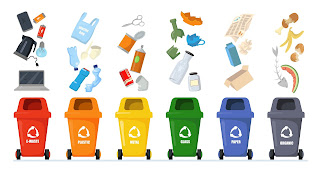Creative Upcycling: Turning Waste into Wonder
Sustainability is no longer just a buzzword, it’s a necessity. As environmental challenges grow, people are finding innovative ways to reduce waste and repurpose materials. One of the most exciting methods leading this change is creative upcycling. Unlike recycling, which often involves breaking materials down into raw components, upcycling focuses on transformation. It takes something that may appear worn out or useless and reimagines it into something better, more functional, or even more beautiful.
Understanding Creative Upcycling
At its core, creative upcycling is about vision and innovation. It asks us to look at everyday items, old clothes, used furniture, glass jars, or electronic parts, not as garbage, but as raw materials for something new. For example, turning a stack of wooden pallets into a rustic coffee table or repurposing mason jars into elegant light fixtures. The process combines sustainability with artistry, giving a second life to materials that would otherwise end up in landfills.
The Environmental Benefits
Every year, billions of pounds of waste are produced, much of which could be repurposed instead of discarded. Creative upcycling helps cut down on this waste and minimizes the environmental burden of overproduction. By repurposing existing materials, we reduce the need for raw resources, lower carbon emissions from manufacturing, and avoid unnecessary landfill contributions.
For instance, when old textiles are turned into quilts or handbags instead of being thrown away, the environmental cost of producing new fabric is avoided. Similarly, converting old tires into playground equipment prevents toxic waste and supports community development. Each upcycled item represents a small but meaningful step toward a more sustainable planet.
Creative Upcycling in Everyday Life
The best part about upcycling is that anyone can participate. It doesn’t require expensive equipment or professional training, just imagination and the willingness to see value where others see waste. Here are some simple ways to incorporate upcycling into your daily life:
-
Clothing: Transform old jeans into shorts, bags, or patchwork blankets.
-
Furniture: Paint and repurpose old chairs or tables instead of buying new ones.
-
Containers: Use glass bottles as planters, vases, or storage jars.
-
Technology: Repurpose outdated electronics into quirky décor or functional gadgets.
These small projects not only reduce waste but also allow people to express their creativity and individuality.
Creative Upcycling in Business and Art
The influence of upcycling extends beyond households. Designers, entrepreneurs, and artists worldwide are embracing the concept to create products that are both sustainable and stylish. Many fashion labels are producing collections entirely from discarded materials, while home décor brands are using reclaimed wood, glass, and metal for chic, modern pieces. Artists are also pushing boundaries by creating large-scale installations made from upcycled plastics, metals, and e-waste, turning environmental awareness into visual storytelling.
This shift demonstrates how creative upcycling can merge innovation with sustainability, meeting the growing demand from consumers who want products with a positive impact on the planet.
A Path Toward a Sustainable Future
As awareness about climate change and waste management grows, creative upcycling will play an even bigger role in shaping a circular economy. Rather than discarding materials after a single use, industries and individuals alike can repurpose them into valuable resources. This approach fosters resourcefulness, reduces dependency on raw materials, and promotes a culture of sustainability that is essential for future generations.
At SwagCycle, we believe in the power of creative upcycling to make a meaningful difference. Our mission is to help businesses and individuals rethink how they handle surplus materials and unused branded merchandise. By extending the lifecycle of products and turning waste into opportunity, we not only reduce environmental impact but also inspire innovation and creativity in sustainable practices.




Comments
Post a Comment